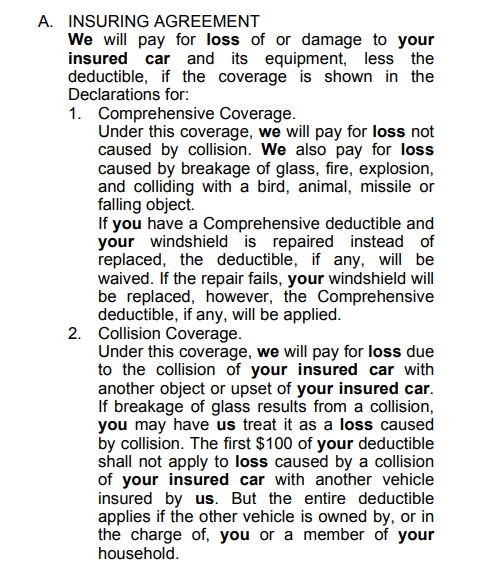An Unbiased View of Pacific Prime
An Unbiased View of Pacific Prime
Blog Article
The smart Trick of Pacific Prime That Nobody is Talking About
Table of ContentsThe Only Guide to Pacific PrimeSome Known Details About Pacific Prime The 10-Second Trick For Pacific PrimeSome Known Factual Statements About Pacific Prime Not known Incorrect Statements About Pacific Prime

This is since the information were accumulated for a period of solid financial performance. Of the approximated 42 million individuals who were uninsured, almost regarding 420,000 (regarding 1 percent) were under 65 years old, the age at which most Americans end up being qualified for Medicare; 32 million were adults between ages 18 and 65, around 19 percent of all adults in this age; and 10 million were children under 18 years of age, concerning 13.9 percent of all children (Mills, 2000).
These price quotes of the number of individuals uninsured are generated from the yearly March Supplement to the Current Populace Survey (CPS), carried out by the Census Bureau. Unless otherwise kept in mind, nationwide estimates of people without medical insurance and proportions of the populace with various type of insurance coverage are based upon the CPS, the most commonly made use of source of estimates of insurance coverage and uninsurance prices.
The Basic Principles Of Pacific Prime

Still, the CPS is specifically valuable due to the fact that it generates yearly quotes fairly swiftly, reporting the previous year's insurance policy coverage estimates each September, and due to the fact that it is the basis for a regular collection of quotes for greater than twenty years, enabling analysis of trends in coverage with time. For these reasons, in addition to the comprehensive use the CPS in various other research studies of insurance coverage that are offered in this record, we rely on CPS quotes, with restrictions noted.

The price quote of the number of uninsured people increases when a population's insurance status is tracked for a number of years. Over a three-year period beginning early in 1993, 72 million individuals, 29 percent of the U.S. https://fliphtml5.com/homepage/odsej/pacificpr1me/. population, were without insurance coverage for at the very least one month. Within a single year (1994 ), 53 million individuals experienced at the very least a month without you can find out more protection (Bennefield, 1998a)
6 out of every ten uninsured adults are themselves employed. Functioning does boost the chance that one and one's family participants will have insurance, it is not an assurance. Even participants of households with 2 full-time breadwinner have almost a one-in-ten possibility of being without insurance (9.1 percent uninsured price) (Hoffman and Pohl, 2000).
See This Report on Pacific Prime
New immigrants account for a significant percentage of individuals without wellness insurance coverage. One evaluation has actually attributed a significant part of the recent growth in the size of the united state without insurance population to immigrants who showed up in the country in between 1994 and 1998 (Camarota and Edwards, 2000). Recent immigrants (those who came to the USA within the previous 4 years) do have a high rate of being uninsured (46 percent), but they and their kids make up just 6 percent of those without insurance across the country (Holahan et al., 2001).
The connection in between medical insurance and access to care is well developed, as documented later on in this chapter. The relationship between health insurance and wellness end results is neither straight nor easy, a comprehensive medical and health solutions research literary works links health insurance coverage to better accessibility to care, much better quality, and boosted individual and population health standing.
Degrees of analysis for examining the results of uninsurance. This conversation of health and wellness insurance coverage focuses primarily on the united state population under age 65 because basically all Americans 65 and older have Medicare or various other public coverage. In addition, it concentrates specifically on those with no medical insurance for any kind of length of time.
Not known Incorrect Statements About Pacific Prime
The troubles dealt with by the underinsured are in some respects comparable to those encountered by the uninsured, although they are typically much less extreme. Wellness insurance coverage, nonetheless, is neither necessary neither adequate to acquire accessibility to clinical services. The independent and straight impact of health insurance policy coverage on accessibility to health and wellness services is well developed.
Others will get the wellness care they require even without medical insurance, by spending for it out of pocket or seeking it from service providers that provide treatment complimentary or at highly subsidized prices. For still others, health and wellness insurance policy alone does not make sure invoice of care as a result of other nonfinancial obstacles, such as a lack of healthcare carriers in their community, minimal access to transport, illiteracy, or etymological and cultural distinctions.
The Ultimate Guide To Pacific Prime
Formal research study regarding without insurance populaces in the United States dates to the late 1920s and early 1930s when the Board on the Price of Healthcare produced a series of records about funding physician office brows through and hospital stays. This problem became salient as the numbers of medically indigent climbed during the Great Anxiety.
Report this page